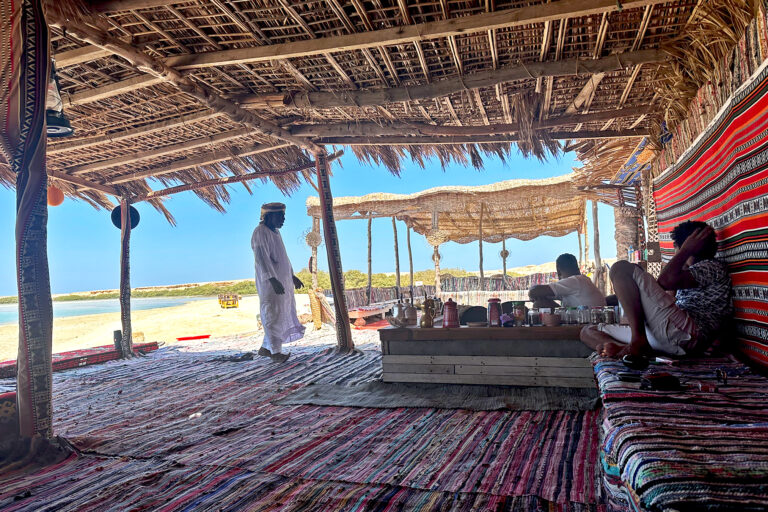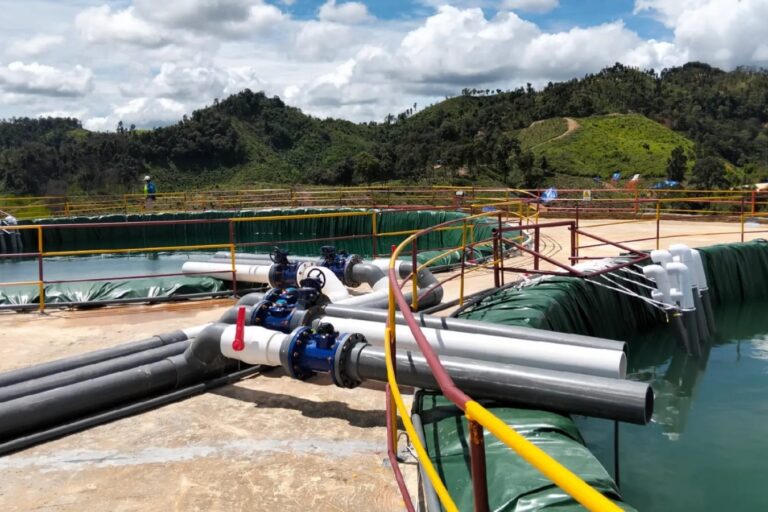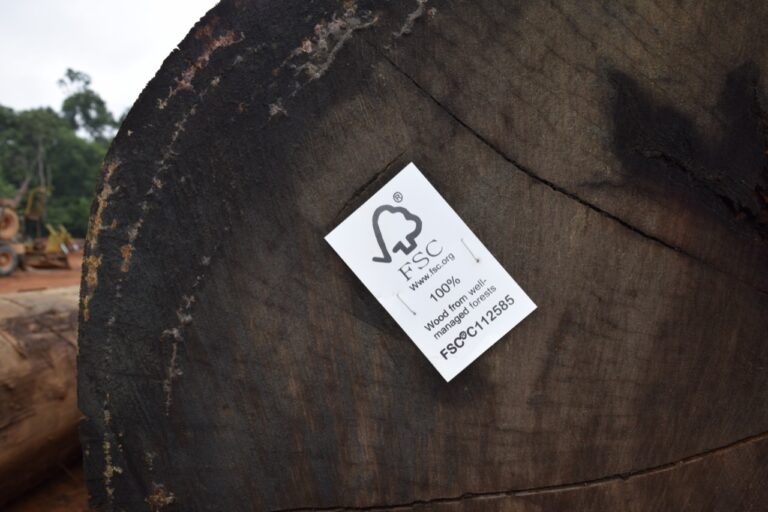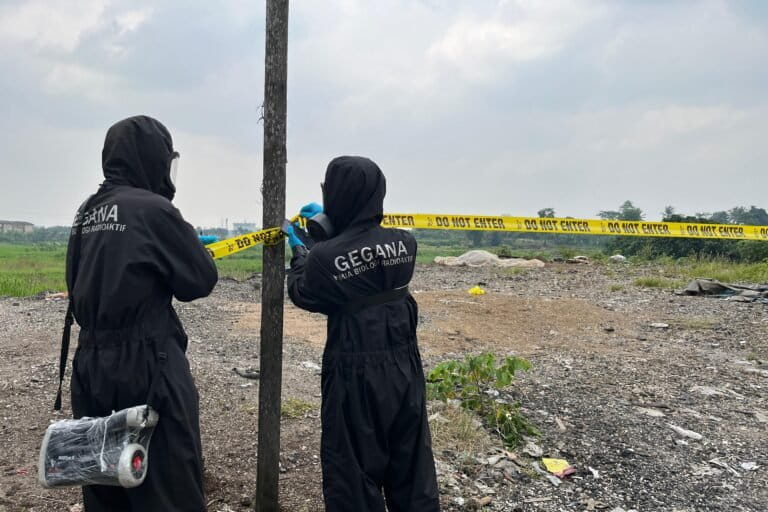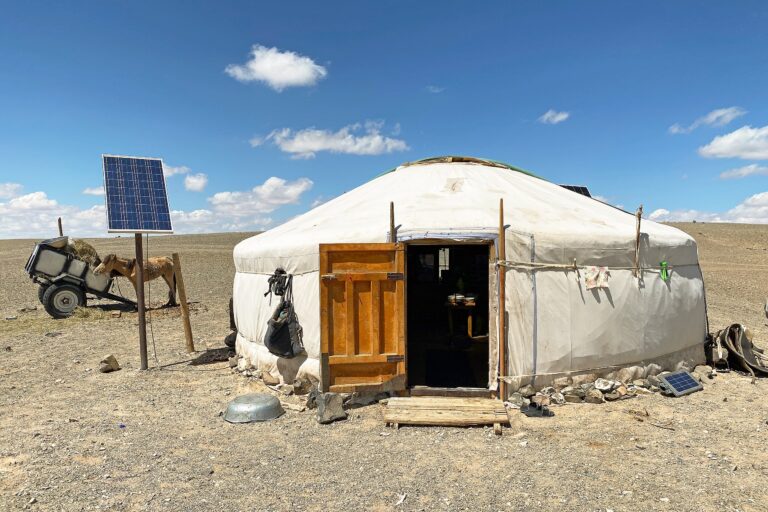
The Amazon rainforest in Yasuni National Park in Ecuador. Photo by: Jeremy Hance.
The Amazon is the largest tropical forest on the planet, covering about 6.5 million square kilometers, although much has been lost (around 18-20 percent) in recent decades. The great forest also, very likely, contains the highest biodiversity of species on land; for example a single hectare in Yasuni National Park contains more tree species than all of the U.S. and Canada combined. Yet new research published in the Proceedings of the National Academy of Sciences (PNAS) finds that quite recently—just 500 years ago—a significant portion of the southern Amazon was not the tall-canopied forest it is today, but savannah.
“These results were very surprising. We went to Bolivia hoping to find evidence of the kinds of crops being grown by ancient Amerindian groups, and to try to find how much impact they had on the ancient forest. What we found was that they were having virtually no effect on the forest, in terms of past deforestation, because it didn’t exist there until much later,” said lead author John Carson with the University of Reading.
For centuries scientists believed the Amazon rainforest had been largely unsculpted by man, only inhabited by small bands of hunter-gatherers with a light environmental footprint. However, that view has been challenged in recent years. Deforestation across the southern band of the Amazon has revealed clear marks of human societies: large geometric earthworks, whose purpose remains unknown, but whose construction was definitely the work of people.

Forest loss trends in the Amazon. Click image to enlarge.

Deforestation in Amazonian countries from 2001-2012. While deforestation has fallen in Brazil, which contains most of the Amazon, it has risen in other countries such as Peru. Click image to enlarge. Related charts
The discovery of hundreds of these geoglyphs—in the form of ring ditches—has led a number of researchers to argue that the Amazon was, in fact, densely inhabited prior to the arrival of Christopher Columbus with his Old World diseases. This theory is also supported by many of the historical accounts of the Amazon by early travelers, some of whom describe large, complex civilizations in the forest and dangerous warriors. In fact, it was a description of a particularly fierce band of female warriors that gave the forest its name. Proponents of a more civilized Amazon further argued that these large populations hugely impacted the ecosystem through millennia of large-scale slash-and-burn farming. Instead of a wilderness, they say, the Amazon was more like a garden; only after Columbus brought genocide with him, did the forest become what it is today.
However, the new research rejects both these theories at their most extreme.
“Our unexpected findings reveal a surprising third scenario, in which earthwork builders took advantage of a naturally open savanna landscape, which existed under drier-than-present climatic conditions before around 2,000 years ago,” the paper reads. “This finding suggests lower environmental impact, less labor, and possibly a smaller population than previously assumed.”
Carson and his colleagues took sediment cores from two lakes in northeast Bolivia—Laguna Oricore and Laguna Granja—near ancient earthen mounds. Reading the evidence from these sediments—such as pollen and charcoal—the researchers were able to reconstruct a picture of the ecosystem over some 6,000 years.
They found that during most of that period the Amazon rainforest was actually smaller than it is today. Then about 2,000 years ago, climatic and precipitation changes brought the Amazon rainforest southward, engulfing a region that before then had been largely wooded savannah.

Indigenous Kaiapo boy in the Brazilian Amazon. The Amazon has been inhabited by people for thousands of years, but debate remains over the size and impact of this population. Photo by: Rhett A. Butler.
“Rather than cutting or burning down huge swathes of jungle, the early Amazonian people simply took advantage of a naturally more open landscape,” said Carson. “Still, the scale of the earthworks that where built on these sites suggests that the land was capable of supporting relatively large populations. Our analysis shows that they were growing maize and other food crops. They also likely caught fish, and there’s evidence from other parts of the Bolivian Amazon for people farming Muscovy ducks and Amazonian river turtles.”
In some places the expansion of the rainforest around the time of Christ may have been halted—or at least fragmented—by farming communities already living in the savannah. As the trees marched in—like Birnam Wood or Tolkien’s Ents—the farmers would have learned to clear large areas in order to survive. They probably did this for centuries before the arrival of Columbus and the subsequent collapse of their communities.
“Humans did have significant environmental impact on a more local scale by suppressing climate driven forest expansion around,” reads the paper, which argues that other geoglyphs across the southern Amazon were likely created in similar savannah conditions and not in primary-growth rainforest.
However, it must be noted that the evidence collected by Carson and his team can in no way be extrapolated across the vast and diverse Amazon ecosystem. Instead, it shows that portions of the Amazon—in this case the very southern edge—were savannah during the historical past. The region in question is known as the seasonal southern Amazonian rainforests (SSAR) and covers around one million square kilometers, or less than one-fifth of the Amazon Basin.
In contrast, research in other parts of the Amazon has found the forest was relatively stable and that the human touch may have been light, though even that contention remains controversial.
“Paleoecological studies conducted in aseasonal western and central Amazonia suggest stability of the rainforest biome throughout the Holocene [over 11,000 years ago] and appear to show little evidence for significant deforestation or biomass burning by their pre-Columbian inhabitants,” reads the paper.

A sharp line separates the Amazon rainforest from cattle pasture in Brazil. The majority of deforestation in the Amazon has been for raising cattle. Photo by: Rhett A. Butler.
There is more at stake in these debates than simply recreating a lost world. By looking at the past, scientists are trying to determine how the future will impact the Amazon rainforest. Currently, the Amazon is under siege. Cattle ranching, industrial agriculture, logging, mining, fossil fuel exploitation, hydroelectric dams, roads, and growing human populations have all taken their toll on the world’s greatest rainforest. In Brazil, alone, over 750,000 square kilometers has been destroyed since the 1970s, an area larger than Texas. While deforestation has slowed significantly in Brazil over the past decades, it’s still ongoing and has sped up in several other Amazonian countries. Overall, no one knows how much has been lost, but its likely around a fifth of the total Amazon. And every year, a little less of the world’s greatest rainforest is left.
So, how much deforestation can the rainforest stand before the ecosystem begins to unravel? And perhaps an even more important question for future generations: how will global warming impact the Amazon?
“Our findings have serious implications for understanding past climate change, and how the Amazon basin might react to more modern forest clearance. It suggests that Amazonia was neither pristine wilderness, nor has it shown resilience to large-scale deforestation by humans in the past,” said Carson.
This means, ongoing deforestation may pose a major risk to the ecosystem. Moreover, since past climate change has clearly impacted the forest in the past, there’s no reason to expect it won’t do so again.
The new paper is unlikely to end the debate over the make-up of the pre-Columbian Amazon, but instead provides an increasingly complex picture of the world’s greatest rainforest.
The Amazon rainforest is likely the world’s most biodiverse ecosystem. Insects make up the bulk of species, like this butterfly, but the majority of them haven’t even been named. Photo by: Rhett A. Butler.
Citations:
- John Francis Carson, Bronwen S. Whitney, Francis E. Mayle, José Iriarte, Heiko Prümers, J. Daniel Soto,
and Jennifer Watling. (2014) Environmental impact of geometric earthwork
construction in pre-Columbian Amazonia. PNAS. www.pnas.org/cgi/doi/10.1073/pnas.1321770111
Related articles
Experts dispute recent study that claims little impact by pre-Columbian tribes in Amazon
(07/05/2012) A study last month in the journal Science argued that pre-Columbian peoples had little impact on the western and central Amazon, going against a recently composed picture of the early Amazon inhabited by large, sophisticated populations influencing both the forest and its biodiversity. The new study, based on hundreds of soil samples, theorizes that indigenous populations in much of the Amazon were tiny and always on the move, largely sticking to rivers and practicing marginal agriculture. However, the study raised eyebrows as soon as it was released, including those of notable researchers who openly criticized its methods and pointed out omissions in the paper, such as no mention of hundreds of geoglyphs, manmade earthen structures, found in the region.
Humans drove rainforest into savannah in ancient Africa
(02/09/2012) Three thousand years ago (around 1000 BCE) several large sections of the Congo rainforest in central Africa suddenly vanished and became savannah. Scientists have long believed the loss of the forest was due to changes in the climate, however a new study in Science implicates an additional culprit: humans. The study argues that a migration of farmers into the region led to rapid land-use changes from agriculture and iron smelting, eventually causing the collapse of rainforest in places and a rise of grasslands. The study has implications for today as scientists warn that the potent combination of deforestation and climate change could flip parts of the Amazon rainforest as well into savannah.
Evidence mounts that Maya did themselves in through deforestation
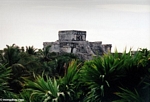
(12/08/2011) Researchers have garnered further evidence for a smoking gun behind the fall of the great Maya civilization: deforestation. At the American Geophysical Union (AGU) conference, climatologist Ben Cook presented recent research showing how the destruction of rainforests by the Mayan ultimately led to declines in precipitation and possibly civilization-rocking droughts. While the idea that the Maya may have committed ecological-suicide through deforestation has been widely discussed, including in Jared Diamond’s popular book Collapse, Cook’s findings add greater weight to the theory.
(08/31/2009) William Ruddiman has become well known for his theory that human-induced climate change started long before the Industrial Age. In 2003 he first brought forth the theory that the Neolithic Revolution-when some humans turned from hunter-gathering to large-scale farming-caused a shift in the global climate 7,000 years ago.
European conquest of the Americas may have driven global cooling
(12/18/2008) Recovery of forests following the collapse of human populations in the Americas after the arrival of Europeans may have driven the period of global cooling from 1500-1750 known as the Little Ice Age, report researchers speaking at the annual meeting of the American Geophysical Union in San Francisco. By some estimates, diseases introduced by Europeans may have killed more than 90 percent of population on the New World within a century of first contact. The rapid depopulation led to large-scale abandonment, and subsequent reforestation, of agricultural lands in the Americas. Analyzing charcoal found in soils and lake sediments at sites across the Americas, Richard Nevle and Dennis Bird found evidence to suggest that this forest regeneration sequestered enough carbon to trigger global cooling.
Pre-Colombian Amazonians lived in sustainable ‘urban’ society
(08/28/2008) Researchers have uncovered new evidence to support the controversial theory that parts of the Amazon were home to dense “urban” settlements prior to the arrival of Europeans in the 15th century. The study is published this Friday in the journal Science. Conducting archeological excavations and aerial imagery across a number of sites in the Upper Xingu region of the Brazilian Amazon, a team of researchers led by Michael Heckenberger found evidence of a grid-like pattern of 150-acre towns and smaller villages, connected by complex road networks and arranged around large plazas where public rituals would take place. The authors argue that the discoveries indicate parts of the Amazon supported “urban” societies based around agriculture, forest management, and fish farming.
Heavily-populated Amazon was decimated by old world disease
(06/09/2008) Ecologists and archaeologists agree that when Columbus struck the Americas in 1492 everything changed, but questions persist over the kind of world Columbus and his followers would soon transform. Recently the state of the pre-Columbian Amazon has been under increasing debate among scientists across numerous fields. In a lecture given at the ATBC conference (Association of Tropical Biology and conservation) in Paramaribo, Suriname, Dr. Francis Mayle weighed in on the debate.
Ancient Amazon fires linked to human populations
(02/20/2008) Analysis of soil charcoal in South America confirms that from a historical perspective, fire is rare in the Amazon rainforest, but when it does occur, it appears linked to human activities. The research, published in Philosophical Transactions of the Royal Society B, is based on dating of soil carbon, which provides a good indication of when fires occurred in Amazonia, according to lead author Mark Bush, head of the Department of Biology at Florida Institute of Technology.









